Glass Fusing Basics And
Techniques
Learn glass fusing methods and techniques that will assist you to create lovely kiln formed items.
Working with a kiln on small scale projects will allow you to build confidence and experience,laying the foundations to move to more advanced levels of fused art work.
Warm glass fusing does not take a great amount of time to learn.
A studio can be set up very quickly in your garage or basement with very little effort.
At it's most simple level a glass fusing method is just stacking two or more layers in a kiln and heating until it fuses together into one piece.
Of course things are never that simple, however, you will find that with knowledge and experience you will produce beautiful art work.
One of the most important aspects of kiln work is the two layer rule which deals with the final thickness of fully fused glass.
One of its natural properties is that when fused it will normally expand or contract to approximately a 1/4" thick.
Experimenting with colors, shapes and thickness can result in quite spectacular results.
Glass can be placed over a fusing mold and heated until it slumps into or drapes over the mold.
Casting results from the material melting and flowing into a mold.
There are a number of different casting methods that can be used.
Placing frit into a mold and heating is used quite often in hot work projects.
Adjustment of the temperature and time in the kiln produces different effects to the finished piece.
Many artists use the following processes to achieve various design outcomes.
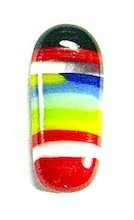
Fire Polishing is a method used in the kiln to round and polish the edges of a piece that has been "cold worked" by grinding, drilling or sawing.
Cold working processes can leave rough or uneven edges.
The item is heated and held at the selected temperature until the edges are nicely rounded with a shiny finish.
Polishing is generally done on a prepared kiln shelf, it is very difficult to do in a fusing mold.
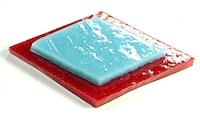
Tack Fusing occurs when separate layers are fused together with very little change in the shape of the object apart from some softening of the edges.
Fusing is carried out at a low temperature to ensure that the item is not distored.
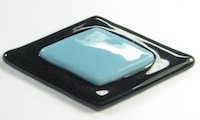
Contour Fusing happens when separate layers are fused together, edges are soft and rounded and the piece will retain a degree of its original shape, subject to the heat applied.
The item will be more than tack fused but less than fully fused.
This technique works very well, particularly in producing a raised surface for a decal application.
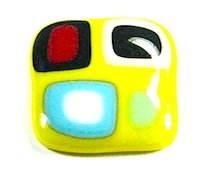
Full Fuse results in separate layers completely fusing into a single uniform layer with a smooth top layer with pieces being nicely rounded.
Fusing is carried out at higher temperature than the above processes.
The photo is an example a fully fused four layer pendant of different colors
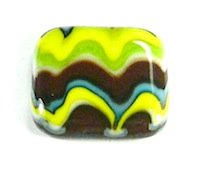
Combed Glass is a process where a metal tool is drawn across molten glass in a kiln, creating patterns.
The glass sheet can be cut on a tile saw and the pieces then fire polished as per the photo.
Due to the high temperatures involved this technique is not recommended for beginners.
Pot Melts produce a multi-colored swirl of colors.
Scrap glass is placed in a terra cotta pot which is placed on kiln posts in the kiln and melted, the glass flowing from the hole in the bottom of the pot.
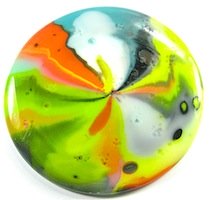
Molds or plates can used to catch the glass, a variation of this is a screen melt where the glass is placed on top of a wire screen and then melted.
Stainless steel is generally used for screen melts, special round and square screens can be purchased
Like combed glass the finished glass is cut on a tile saw and used to create "one off" pieces of glass jewelry.
Fusing glass comes in a large range of solid or transparent colors and is available in standard thicknesses.
Either 1/8" -3mm or 1/16" -1.5mm fusing sizes are available. It comes in different sizes with 12" square being very handy for jewelry making.
Smaller pieces can also be purchased from some glass shops.
Of utmost importance is that the glass must be tested compatible to ensure that it does not crack or break.
One of the natural properties of glass is that when fused it will normally expand or contract to approximately a 1/4" thick.
This process is quite handy when making jewelry as it produces some very interesting end results.
Dichroic glass is a more recent addition to the glasses avaiable.
This has become very popular for glass fusing as jewelry artists utilize the brilliant colors produced after firing.
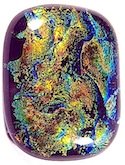
There are an amazing number of dichroic glass patterns, no two fired pieces will be the same due to the way the coating is applied to the glass when it is being made.
Providing many creative design options, dichroic paper slide decals can be applied to glass and then fused,
Return To Home Page



